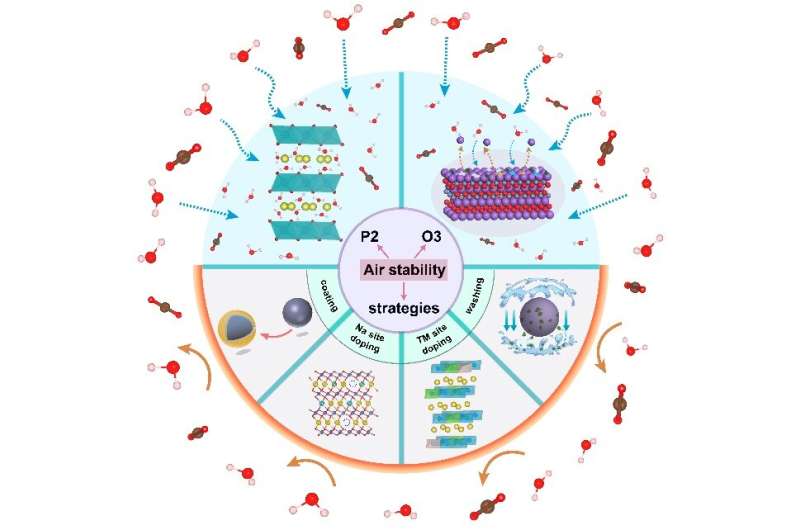Air-stability of sodium-based layered-oxide cathode materials

Sodium ion batteries are considered to be one of the most promising alternative systems to lithium-ion batteries, especially for large scale applications. Sodium-based transition-metal oxides with layered structure have been the focus of studies, due to the merits of easy synthesis, stable structure, and high energy densities. Unfortunately, most layered-type cathode materials are air-sensitive, which leads to a high manufacturing cost of sodium-ion batteries, and greatly impedes the practical utilization of sodium-ion batteries.
To promote the practical application of sodium-ion batteries, their poor air-stability needs to be understood and resolved. In a review that summarizes the latest understanding and solutions of air-sensitivity is desired, the authors first summarized the fundamentals of sodium-based layered oxide materials, then concentrated on the air-stability of layered cathodes and brought up key issues to the research community's attention.
The mechanism of air-sensitivity is complex and involves multiple chemical and physical reactions. Several components in air, such as oxygen, water, and carbon dioxide participate in the reaction with layered oxide cathode material, depending on the crystal structure of the cathode material. Different strategies to improve the air stability, including the introduction of surface coating, the washing of cathode materials, and element substitution in either transition-metal sites or sodium sites were discussed.
The authors have found that there is a lack of instructive information to rationally design practical materials. However, the amount of progress made every year in this field is encouraging. Moreover, since most strategies described in this review are not mutually exclusive, different strategies could be combined to multiplicatively modify the materials in order to achieve a synergistic effect. It is hoped this review will be helpful for the research community and in the progression of the implementation of sodium-ion batteries.
The research is published in Science China Chemistry by Dr. Hu-Rong Yao (Fujian Normal University), Dr. Lituo Zheng (Fujian Normal University), Prof. Sen Xin (Institute of Chemistry, Chinese Academy of Sciences) and Prof. Yu-Guo Guo (Institute of Chemistry, Chinese Academy of Sciences).
More information: Hu-Rong Yao et al, Air-stability of sodium-based layered-oxide cathode materials, Science China Chemistry (2022). DOI: 10.1007/s11426-022-1257-8
Provided by Science China Press




















